
In 2012 the Rogers Mansion Museum Complex, with 12 historic buildings, was awarded a unique designation on the National Register of Historic Places. William Rogers purchased the property in 1648 which was owned by a Rogers descendent until 1880. Dr. Nugent occupied the Rogers Mansion from 1889 -1899 prior to its purchase by Samuel Parrish, an attorney from New York City, summer colonist, and founder of the Parrish Art Museum. Later, in 1952 the Southampton Colonial Society leased the house and grounds and began restoration. The house is filled with furnishings donated by members of the Southampton community and date mostly from the Victorian (1837-1901) and Edwardian eras (1901-1910). On the grounds behind the mansion is Old Southampton Village with historic structures collected from different areas of Southampton. They include a 19th century paint store, a blacksmith’s shop, a cobbler’s shop, a one-room schoolhouse, and a colonial era barn that was seized by British soldiers to lodge their horses during the Revolutionary War.

July 19, 2018
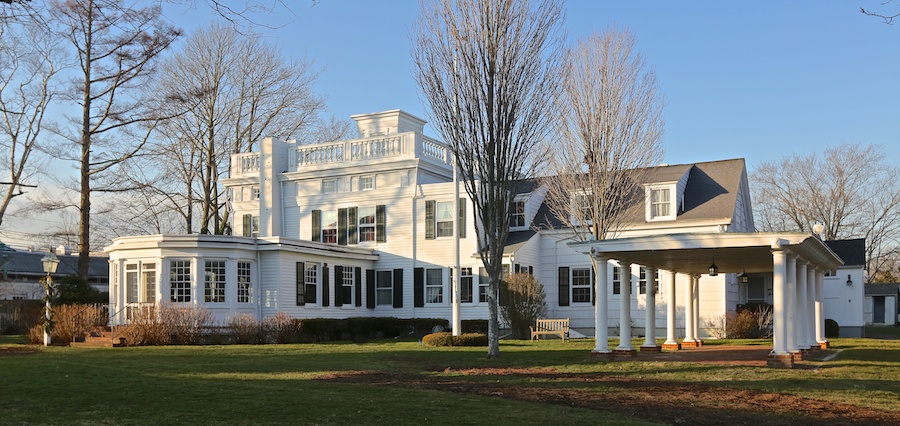
Rogers Mansion, view to the south.

Rogers Mansion, view to the west.
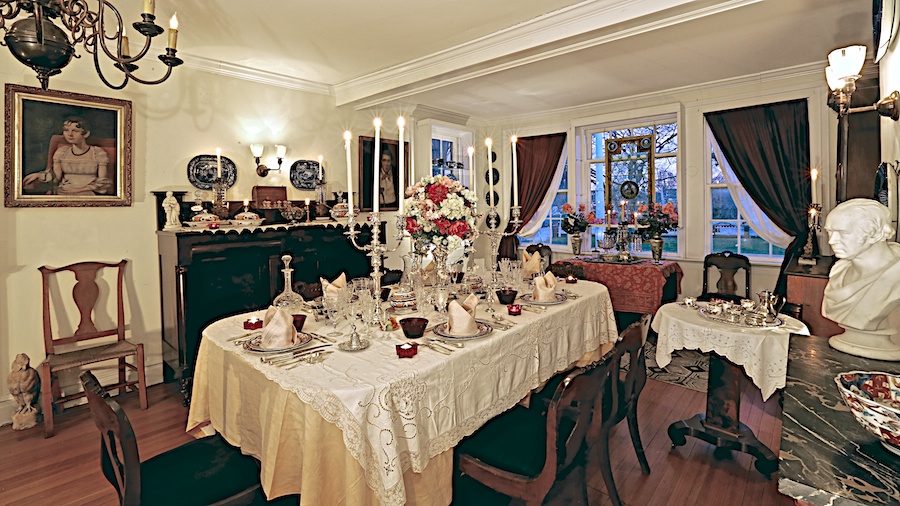
Dining Room, Rogers Mansion

Dining Room, July, 2019
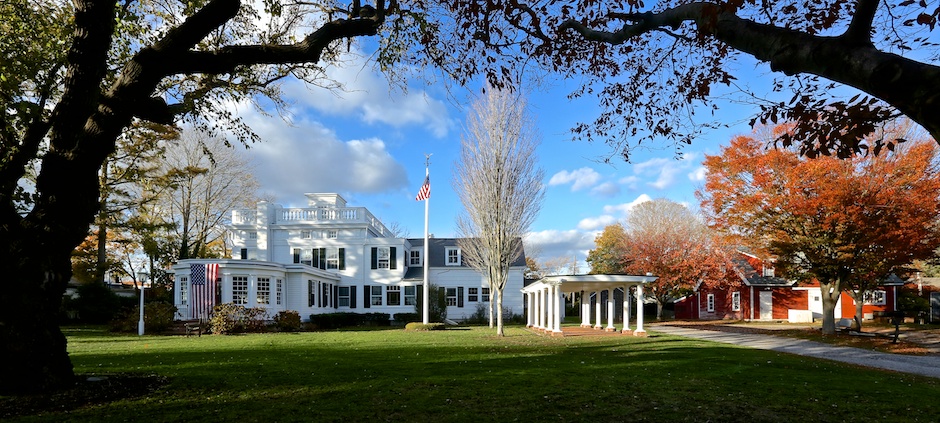
November 14, 2014
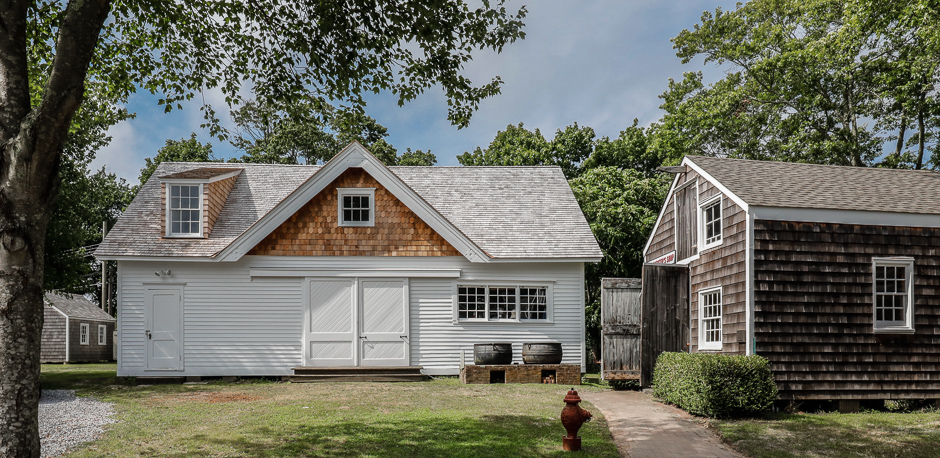
Nugent Carriage House & Carpenter’s Shop — August 1, 2019
The Nugent Carriage House was built in the 1890s by Dr. John Nugent who owned the Rogers Mansion from 1889 to 1899. The sole “Village Street” structure that was not moved to the site, it originally had a ramp extending from the sliding doors to a drive leading to Meeting House Lane. The first in a line of prominent local physicians, Dr. Nugent was a member of Southampton Hospital’s first medical board. Both of his sons also practiced medicine in the area. The building currently houses the museum’s collection of whaling artifacts.
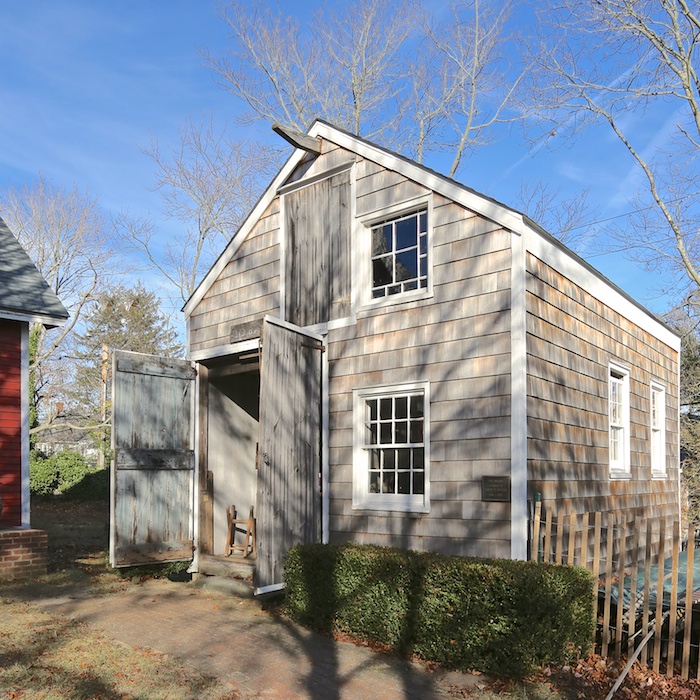
Carpenter’s Shop
The carpenter shop was acquired circa 1963 when the parking lot on West Main Street was created. The building, which was located in the area to be cleared was thought to be about 100 years old at the time. The tool collection display was recently refurbished by Robert Skinner with the aim of highlighting the role of the early carpenters, cabinetmakers and joiners who were so important in the development of Southampton. It has been set up to represent a typical 19th-century small town carpenter/cabinetmaker’s shop.
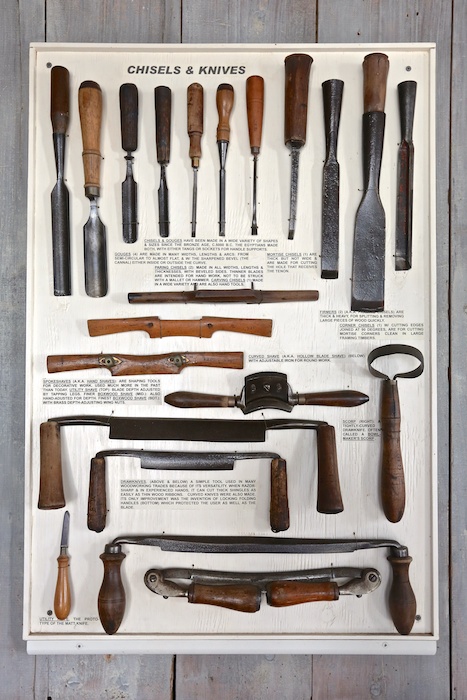
Tool Display at the Carpenter’s Shop
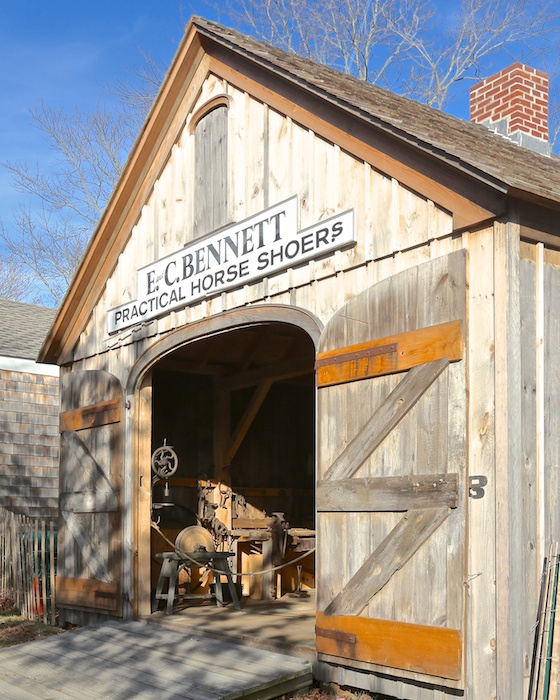
E.C. Bennett: Practical Horse Shoers.
The building that now houses the blacksmith shop was built circa 1780 and was located on Hampton Road near Main Street where it served as a stable before it was moved to the museum circa 1977. The equipment on display came from James Burnett’s blacksmith shop on the east side of Halsey Lane in Water Mill when it went out of business in 1973. The signage, “E. and C. Bennett Practical Horse Shoer’s” was applied in commemoration of a blacksmith shop founded on Hill Street in Southampton in about 1890.
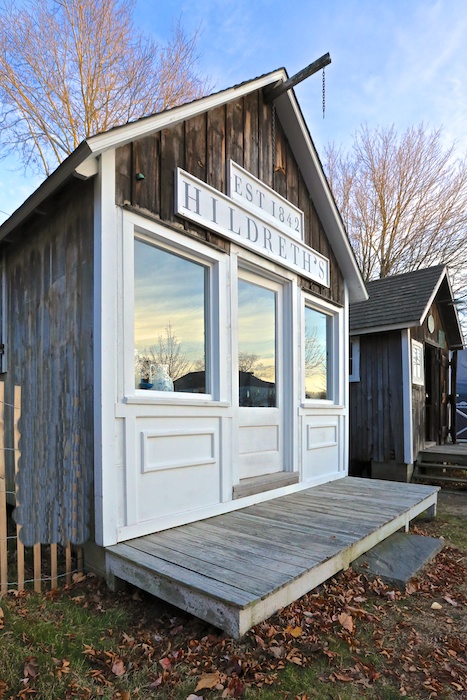
Hildreth’s — America’s oldest department store — established 1842.
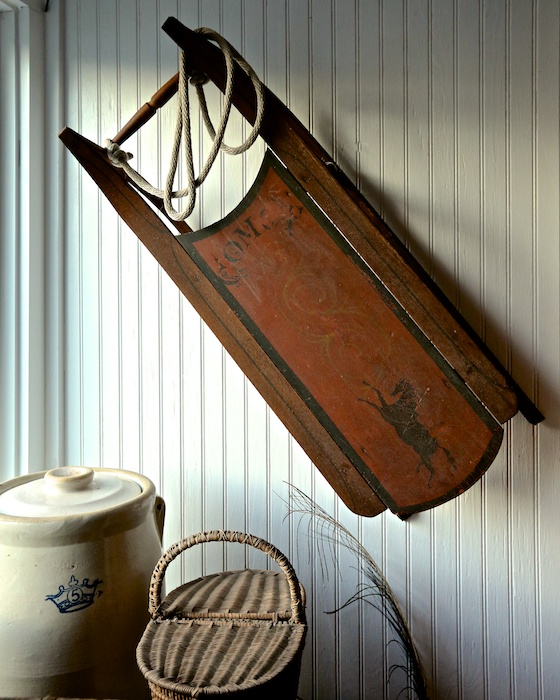
Display items at Hildreth’s.

————————————————————————–

Sayre Barn Restoration
The Sayre Barn was built in 1825 by the Huntting family and sold to Isaac Sayre a year later. Originally located at the corner of Main Street and Hampton Road, it housed Mr. Sayre’s livestock and stored goods. For many years it was known as the “Billboard Barn” because its location made its façade an ideal place to post signs and notices. In the 1930s, when it was owned by the Dimon family, it was made into an antiques store. After World War II the Dimon family gave the barn to the Colonial Society, which became the Southampton Historical Museum, and in 1952 it made the trip down Main Street to the museum property on Meeting House Lane. In 2010, considered seriously deteriorated, the barn was named to the Society for the Preservation of Long Island Antiquities’s list of endangered structures and a campaign was launched to restore it. In the spring of 2013, specialists in historic restoration Strada Baxter Design were given the task of returning the Sayre Barn to its original state.

Sayre Barn, 2014
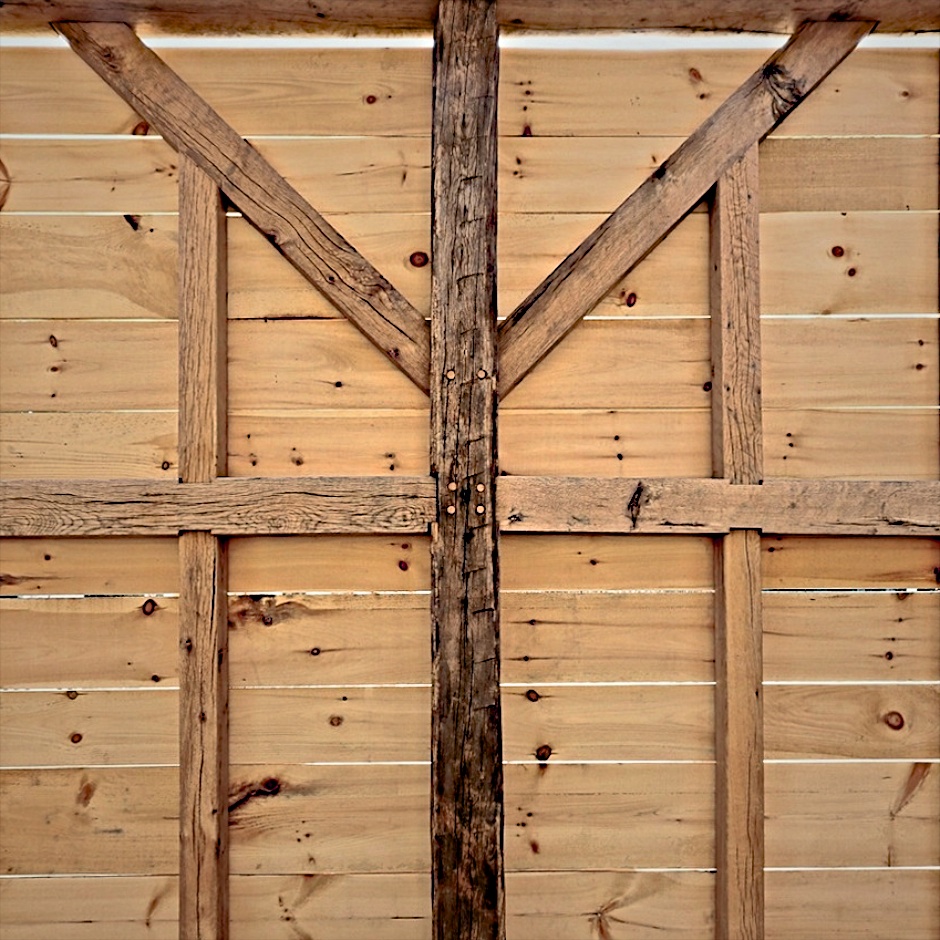
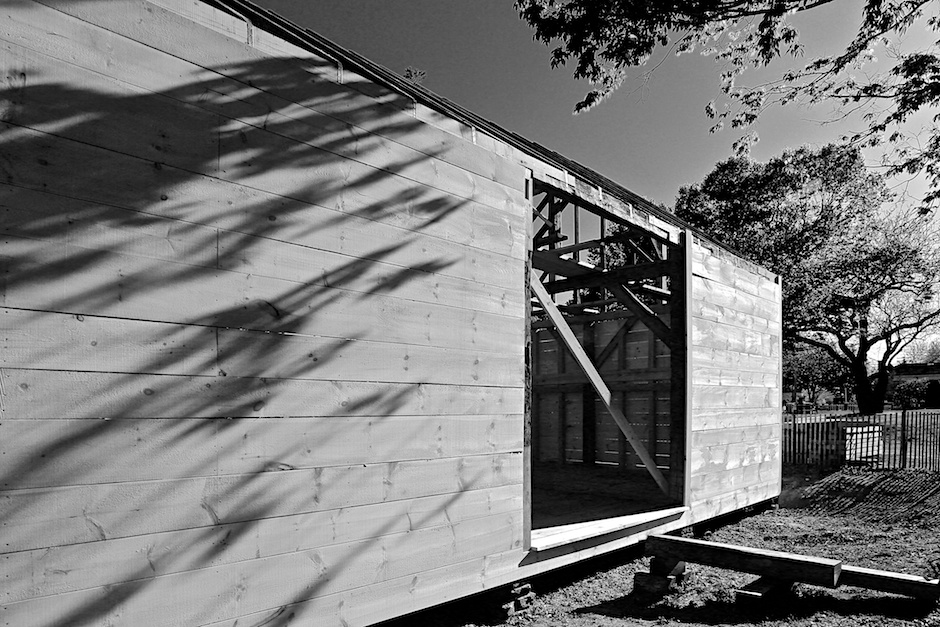
Visit: AAQ / East End / Restoration — Sayre Barn, 1825
————————————————————————————————————————
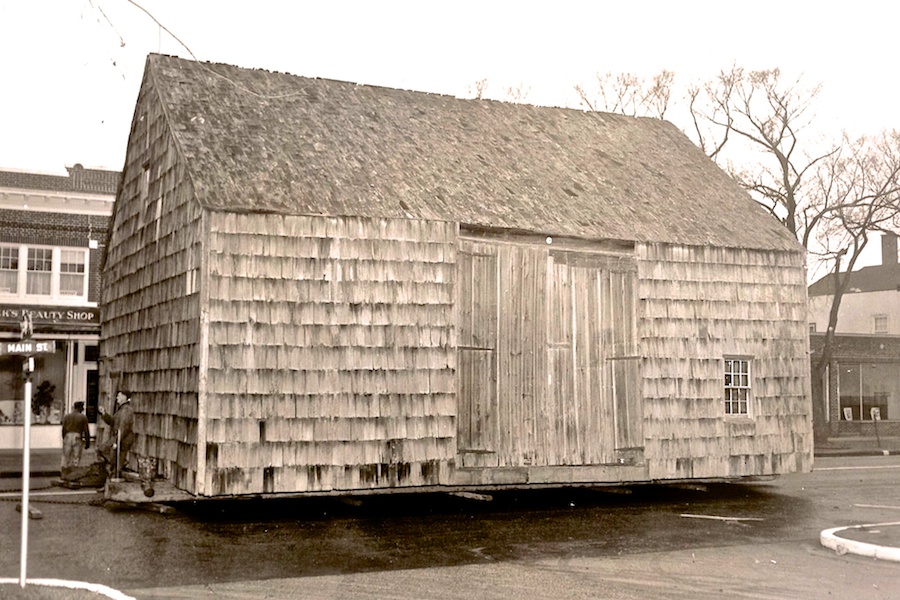
Archival Photograph, 1952, – Sayre Barn being moved to the Museum Complex. Courtesy of Southampton Historical Museum.
—————————————————————————————————-
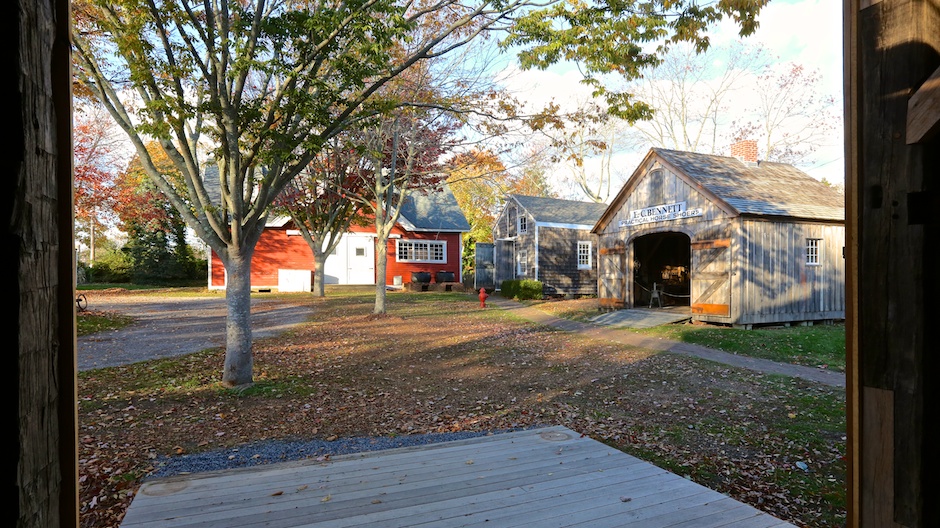

Decoy Shop
The decoy shop was set up by the late Arnold Arnister, a master decoy carver of Southampton. On display are decoys in various stages of completion as well as the carver’s tools.
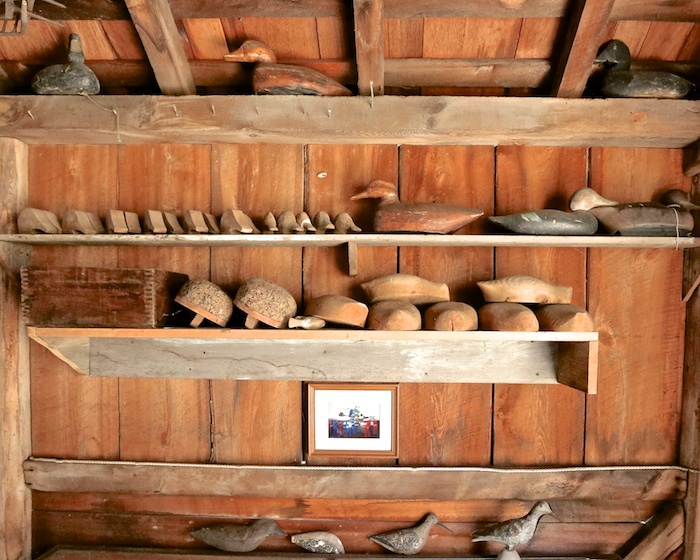
——————————————————————————————–
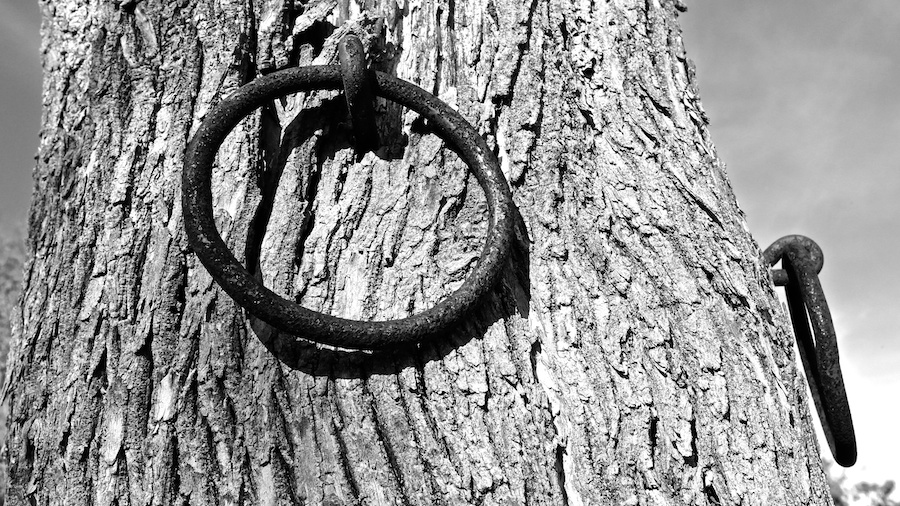
Whipping Post
Originally, in the early days of the settlement, two stocks, one pillory and whipping post were located at the corner of South Main Street and Jobs Lane and used for public punishment for wrongdoing. The present models were built in 1966. The Whipping Post was used in early Southampton to punish thieves and bad children, and also used for those accused of adultery and wife beating.
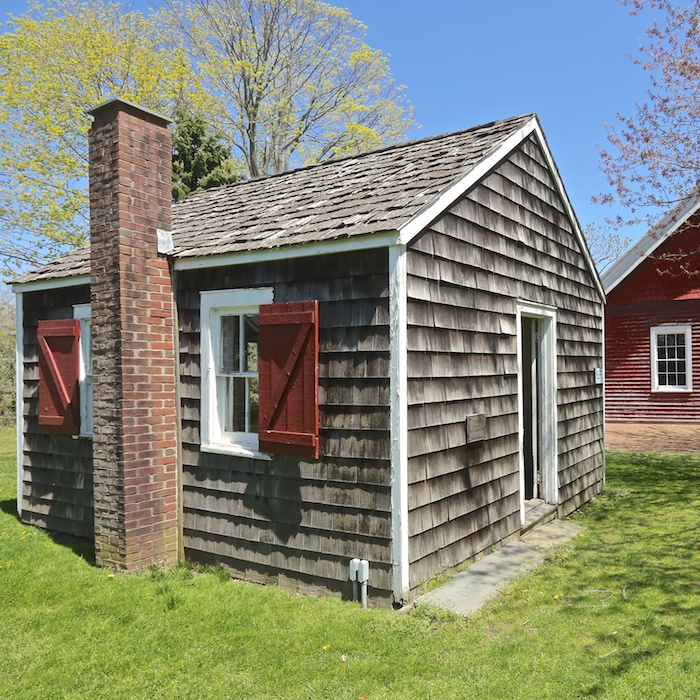
Red Creek Schoolhouse
The Schoolhouse was purchased by the Colonial Society in 1958 and moved from its original location in Red Creek, Hampton Bays, to the museum grounds. History records it as one of the oldest schools in Suffolk County.
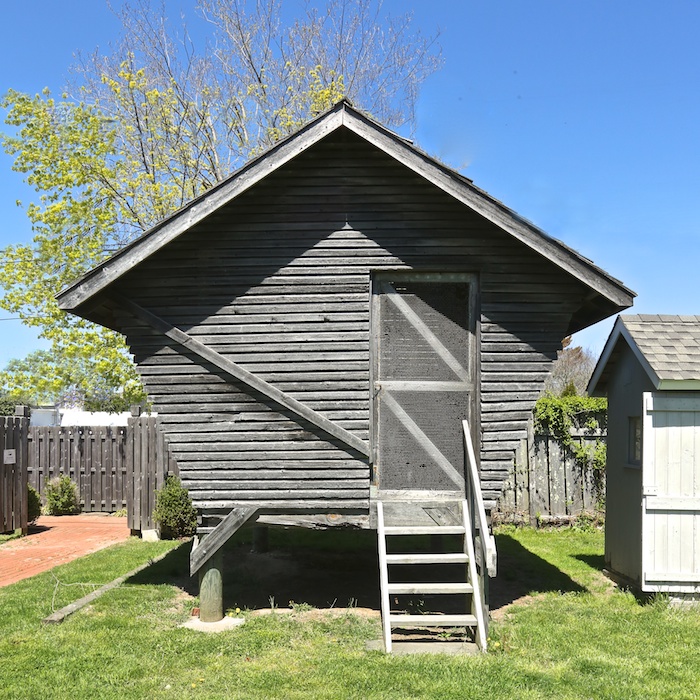
Corn Crib
The corn crib probably arrived at the museum from the de Rose property on Hill Street in the 1960s when the 19th-century village buildings were assembled. It was used for storage of corn where it would dry. It was built on stilts and had retractable stairs so that rodents and other animals could not get in.
————————————————-
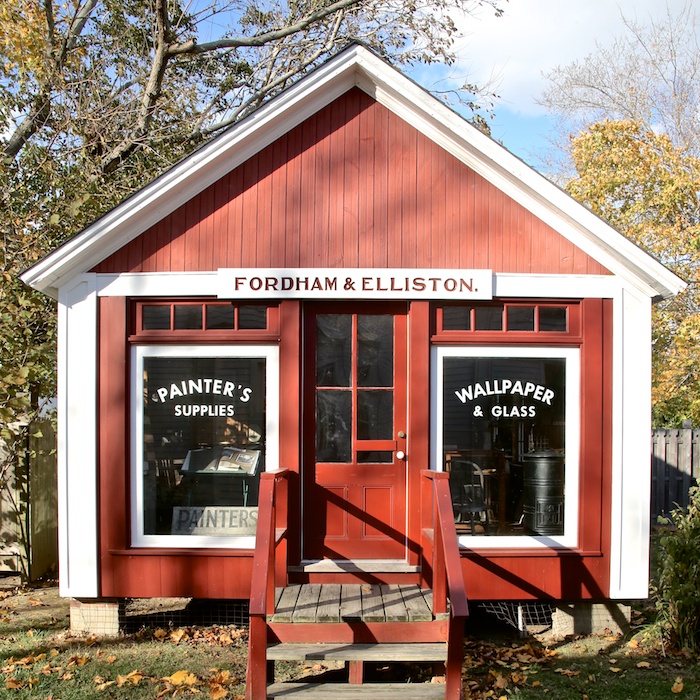
The Paint Shop
The Paint Shop, donated by James Nugent, arrived at the museum in 1987 from its original location on North Main Street. In the 19th century the building housed the Dunwell Paint Shop. In the 21st century it stands on the museum grounds as a replica of the Fordham and Elliston paint shop, which stood at 69 Jobs Lane from the late 19th to the late 20th century. Its interior boasts carefully preserved furnishings, equipment and paint stock from the early days of the business.
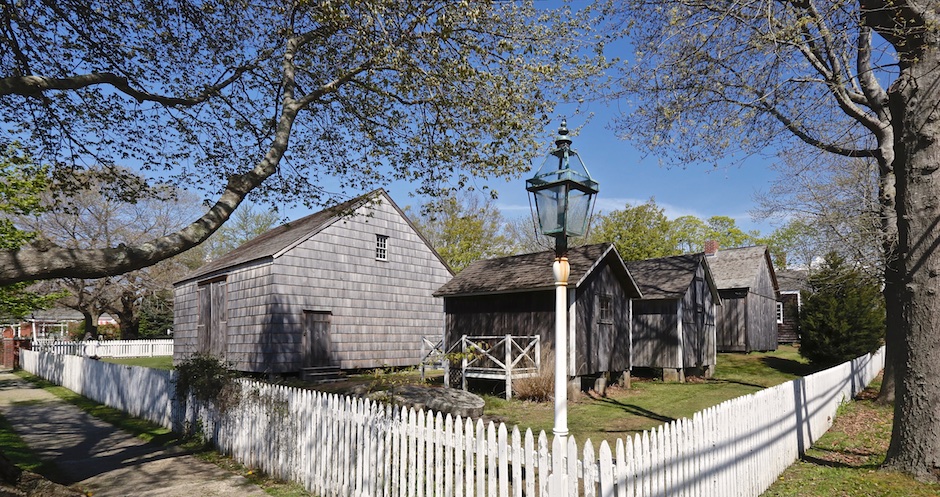
Southampton Historical Museum, corner of Meeting House Lane & Oak Street, May 4, 2017
———————————————-
Southampton Historical Museum and Research Center
www.southamptonhistoricalmuseum.org
________________________________________________
——————- Visit on Site —————-
——————————
Photos/Copyright, Jeff Heatley.

Holidays, 2013, Window Display Detail.
__________________________________________________________________


